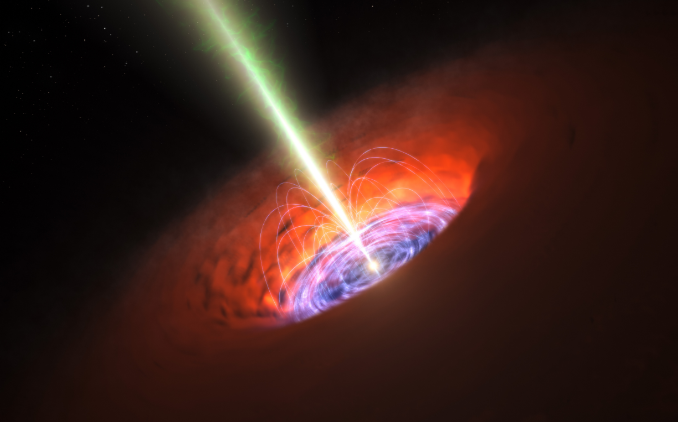Experts just found 83 MASSIVE black holes at the edge of the universe

(Natural News) Black holes are well-known massive cosmic events, but you don’t expect them to occur all that often. However, Japanese astronomers discovered a staggering 83 quasars powered by supermassive black holes in the early universe. This discovery is instrumental in understanding how common supermassive black holes were during the universe’s infancy.
Supermassive black holes are found in the center of galaxies. They have a mass equivalent of billions of Suns. The universe is littered with supermassive black holes, but scientists have yet to find out when they first formed.
The farthest quasar found let astronomers peek into the infancy of the universe
It is impossible to directly observe black holes because they have extremely powerful gravitational pull; so strong that not even light can escape. However, when large quantities of objects, like planets, stars, and other cosmic bodies, fall into a black hole, it releases massive amounts of energy that is seen as a bright light across the universe. This event is what astronomers refer to as quasars. Quasars are only found around supermassive black holes and are the most luminous objects in the universe.
The researchers looked for quasars in the far-off universe using the Subaru Telescope in Hawaii. The farthest quasar they found is 13.05 billion light-years away from Earth. Meaning, it was birthed when the universe was only 800 million years old. They also found 82 more supermassive black holes in the survey region. Prior to this observation, only 17 supermassive black holes were known to exist in the same region.
Get CLEAN FOOD and help support our mission to keep you informed: The Health Ranger Store lab verifies everything we sell with accredited testing for heavy metals, microbiology and food safety. Certified organic facility, ISO-accredited on-site laboratory, no GMOs or synthetic ingredients. The world's #1 source of lab-verified clean foods and superfoods for nutritional healing. 600+ products available. Explore now.
“The quasars we discovered will be an interesting subject for further follow-up observations with current and future facilities,” said Yoshiki Matsuoka, lead author of the study. “We will also learn about the formation and early evolution of SMBHs [supermassive black holes], by comparing the measured number density and luminosity distribution with predictions from theoretical models.”
The researchers published their findings in the Astrophysical Journal Letters. (Related: Understanding massive black hole formation: Researchers believe supersonic gas streams from the Big Bang may provide the answer.)
Formation of black holes
Black holes only exist in two forms: stellar black holes and supermassive black holes. Stellar black holes have a mass that are a few times larger than the sun. Supermassive black holes, on the other hand, have incredible masses, which are millions or billions of times bigger than stellar black holes.
Stellar black holes start their lives as massive stars. These luminous stars can live for billions of years. However, as time passes, they eventually run out of hydrogen to burn. When this occurs, these stars will start burning other elements, which results in a solid core of iron. The core will soon reach a critical mass and will cause one of two things: the dead star either collapses in on itself, then explodes outward resulting in a supernova, or it collapses in on itself entirely, creating a black hole.
While the formation of stellar black holes is well-studied, experts are not entirely sure how supermassive black holes are formed. Some scientists believe that supermassive black holes form when gas clouds collapse in on themselves during galaxy formation. Some experts think that these massive singularities start as stellar black holes and grow over time. However, there are some who believe that these giants are the result of stellar black holes merging over time.
Studying these massive objects are of great importance since they allow humanity to peer into the beginning of the universe. Maybe someday, technology will allow people to look farther into the universe and see how it all started.
Sources include:


